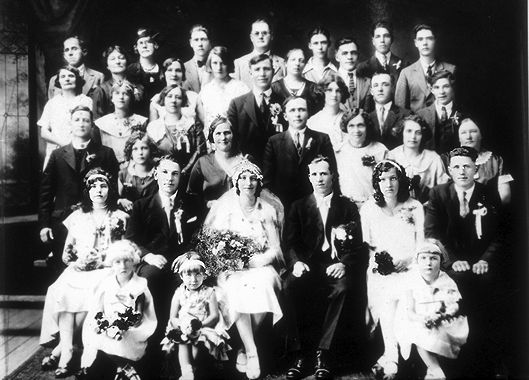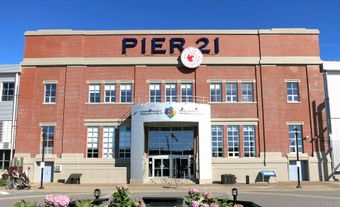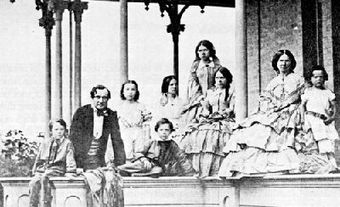Background
Beginning in 1772, Russia, Prussia and Austria began partitioning the territories of the Polish-Lithuanian Commonwealth. The first waves of Polish emigration were driven by the assimilation of Polish territories, religious persecution, difficult conditions in Polish villages due to overpopulation and lack of economic opportunities in the cities.
Migration and Settlement
There were six significant waves of Polish immigration to Canada. Broadly speaking, they were from 1854-1901, 1902-15, 1916-39, 1944-56, 1957-79 and 1980-93.
The first wave of Polish immigrants to Canada arrived in 1858 from the Kashub region of northern Poland. Many made their home in the Renfrew area of eastern Ontario, notably in the town of Wilno, which is acknowledged as the oldest Polish settlement in Canada. By 1862, another group of Poles had journeyed to Canada and settled in the southwestern Ontario town of Berlin (Kitchener).
The second wave of Polish immigration to Canada occurred after the First World War, mainly during the period 1921-1931. These first two waves included many family groups from villages and small towns of Austrian-occupied territory. Hardworking, religious peasants, many received land grants from the government or bought lots in Manitoba, Saskatchewan and Alberta, where they built farms. Others worked on railway construction or in the coal mines. The second generation of Polish immigrants often moved to larger settlements or towns, where they opened small businesses.
While the majority of the first Polish newcomers to Canada did not arrive directly from Poland, the immigrants of 1916 to 1939 arrived from an already independent Poland and settled (at least until 1931) primarily on the Prairies. Until 1944, Winnipeg, Manitoba had the largest Polish community in Canada.
The wave of immigrants in the post-WWII era (see Second World War) consisted largely of former soldiers of the Polish armed forces who had fought in Western Europe, former inmates of Nazi concentration or forced-labour camps and political refugees from communist Poland. 50 percent of this wave settled in Ontario.
From 1957 to 1979, immigrants again arrived directly from Poland. The next wave, arriving between 1981-93, was motivated by the deep economic and political crisis in Poland. Again, around 50 per cent of this group settled in Ontario.
Economic Life
The first Polish immigrants helped settle the prairies of Manitoba, Saskatchewan and Alberta, and made up a large percentage of the labour force in mines, the forest industry and public works. Many Polish newcomers opted to settle in Manitoba around Springfield, St. Clements, Brokenhead, Lac du Bonnet, Whitemouth, Gimli, Bifrost, Glenella, Rosedale, McCreary and Dauphin as these areas were close to established Ukrainian farmers, who were often from neighbouring villages in Poland (see Ukrainian Canadians.)
A widespread movement of immigrants to larger centres started in the 1930s. The second generation and the post-WWII immigrants were more financially secure, with professional experience and technical qualifications. They opened their own enterprises, occupied executive positions in industry, and were prominent in social and health services and in higher education.
Social, Cultural and Community Life
Most Poles have traditionally identified as Roman Catholic, but there are also Lutherans and United Church members. A separate Polish Catholic Church, which is not affiliated with the Roman Catholic Church, has parishes in various Canadian cities (see Catholicism). Parishes formed the first organizational units, providing a framework for community and social life. Lay organizations appeared in towns only shortly before the Second World War.
The 1930s marked the appearance of social clubs that helped maintain Polish customs and traditions, as did the Polish government through its consulates. Polish credit unions were created across Canada. The first, the St. Stanislaus Credit Union, was organized in Toronto, Ontario. In the mid-1950s women formed the Federation of Polish Women in Canada, a self-contained and independent organization which was concerned with cultural and political issues. Various folk groups or dance ensembles surfaced at different times and in different communities.
The Catholic Church has played a very important role in Polish Canadian life, especially in difficult times. For many immigrants it provided the sole contact with their home country and its culture. The priests often served as advisers, defenders, spokesmen, religious leaders and community leaders.
The first Polish newspaper, which appeared in Winnipeg in 1904, was short-lived (see also Newspapers in Canada and Newspapers in Canada: 1800s – 1900s). The second attempt,Gazeta Katolicka (Catholic Gazette), was founded in Winnipeg in 1908. The Polish press in Canada remains active today.
Polish Canadian writers and poets include Louis Dudek, W. Iwaniuk, B. Czaykowski, Florian Smieja, J. Ihnatowicz, A. Busza, J. Abramow-Newerly, W. Liebert, A. Tomaszewski, J. Tomaszewski, E. Ejbich and the late Zofia Bohdanowicz, B. Czaplicka, A. Grobicki, A. Poznanska-Parizeau and Danuta Bienkowska.
Artists include K. Bryzgalski, J. Kolacz, E. Kujawska, A. Pawlowski, L. Wyczolkowski, E. Koniuszy, S. Katski, T. Jaworska, G. Staron, M. Ciechomska, B. Michalowska, J. Lubojanska, J. Kolaer, G. Denisiuk, and the late E. Chrúscicki, H. Hoenigan, K. Sadowska and M. Schneider.
Notable Polish Immigrants to Canada
The first Polish immigrant to Canada was Dominik Barcz, a fur merchant from the port city of Gdansk on the Baltic coast. He arrived in 1752 and settled in Montreal. A few years later in 1757, Charles Blaskowitz, a cartographer and deputy surveyor-general of lands, is reported to have arrived in Canada.
In 1776, two other notable Polish immigrants are reported to have arrived in Canada. August Franz Globensky, an army surgeon of the Hesse-Haynau regiment, landed in Quebec City with his regiment in 1776. (His grandson,Charles Auguste Maximilien Globensky, was elected to the House of Commons in Ottawa almost a century later, in 1875) and Leveright Pinze, a surgeon of the auxiliary forces from Brunswick.
Aleksander E. Kierzkowski, an engineer who became politically active in the Saint-Hyacinthe (Quebec) riding in 1867, arrived in 1841. Among the Swiss regiments that fought at Fort Barrie in 1812, there were about a dozen Poles from former Napoleonic legions. Sir Casimir Gzowski, a prominent civil engineer, railway builder and social activist, arrived from the US in 1842. (His great-grandson, Peter Gzowski, would go on to become one of Canada's most well known English-language broadcasters.) Izaak Hellmuth, from Warsaw, Poland, came via England and was one of the founders of Huron University College and the University of Western Ontario.
Politics
Until 1980, most Polish Canadians voted Liberal in federal elections. Stanley Haidasz, born in Toronto of Polish parents, was the first Polish Liberal MP. He later became minister for multiculturalism in the Trudeau government and the first Polish representative in the Senate. There were three ministers of Polish origin in the Saskatchewan NDP government until its defeat in 1982. In the Mulroney Federal Conservative government, Donald Mazankowski was deputy prime minister.
Population
According to the 2021 census, 982 820 Canadians claim full or partial Polish ancestry. The number of Canadians who speak Polish as a mother tongue language is on the decline. In 2006, Polish was the mother tongue of 217 605 Canadians. That number fell to 201,240 in 2011, 191,775 in 2016 and 176 010 in 2021.
Group Identification
Political and financial support for Poland was strong during the Second World War, when Poland was under German occupation, and later when the communist government attempted to suppress the church. Contact between the Polish diaspora in Canada and the homeland was maintained through Polish-organized travel tours, family visits and language courses for the young. In the late 20th century, Polish pride was reinforced by the election of Pope John Paul II, the choice of Czeslaw Milosz in 1980 for the Nobel Prize for Literature and the selection of Lech Walesa in 1983 for the Nobel Peace Prize.
Heritage in Canada
The Polish Canadian Research Institute, established in 1956, conducts studies on Poles in Canada. It has an extensive library and archives and publishes its research.
The Polish Institute of Arts and Sciences in Canada was founded in 1943 and is headquartered in Montreal. It is affiliated with academic institutions in Poland and Canada (including McGill University), and promotes the intellectual and cultural heritage of Poland through events and research.
In 2018, a monument honouring the Polish Canadian community was erected at Pier 21 in Halifax, Nova Scotia.

 Share on Facebook
Share on Facebook Share on X
Share on X Share by Email
Share by Email Share on Google Classroom
Share on Google Classroom






